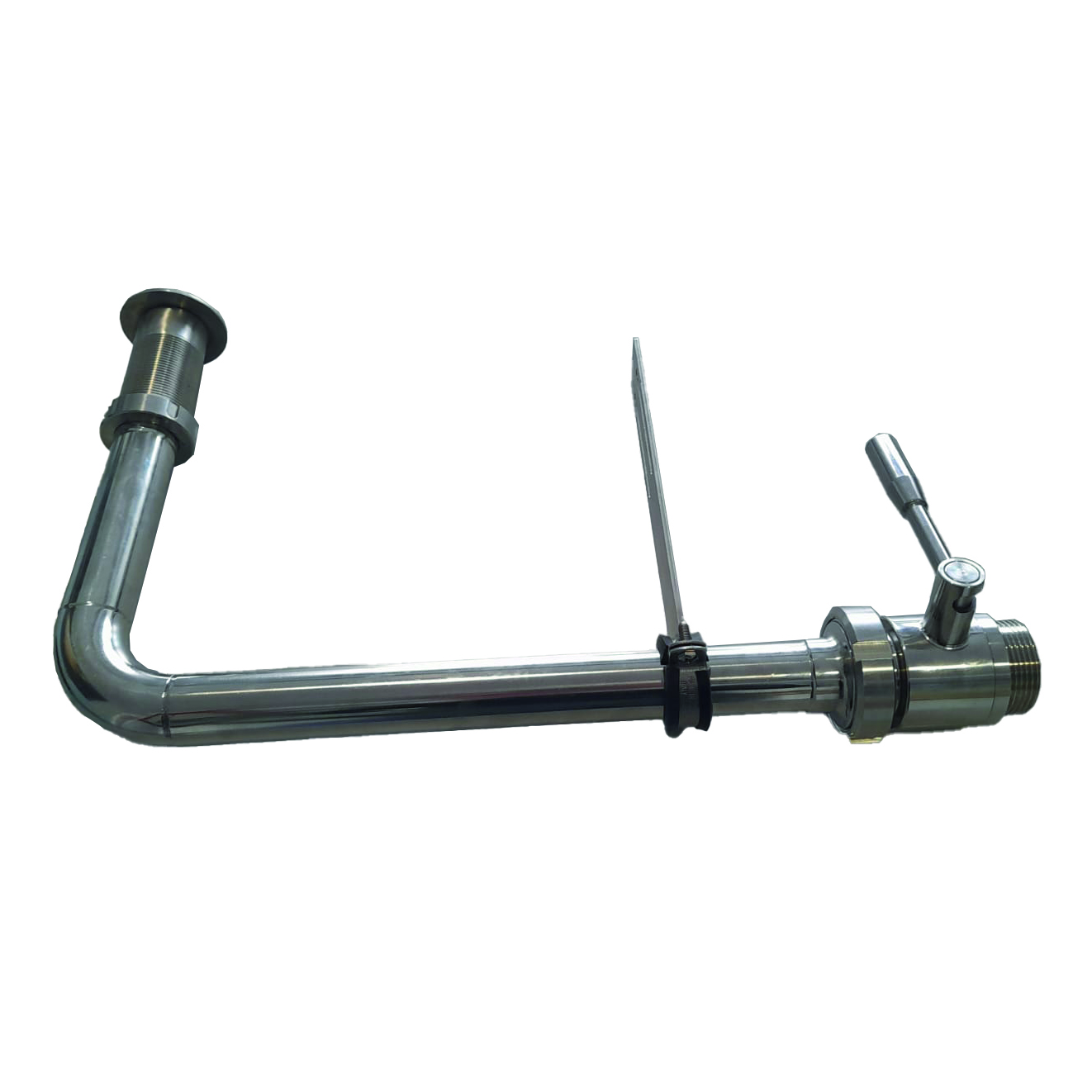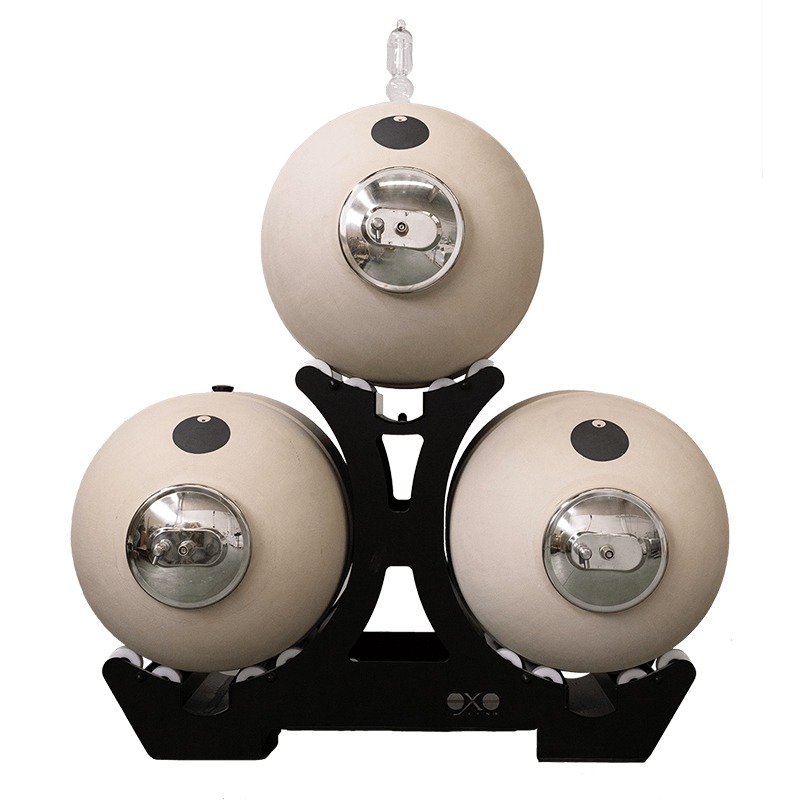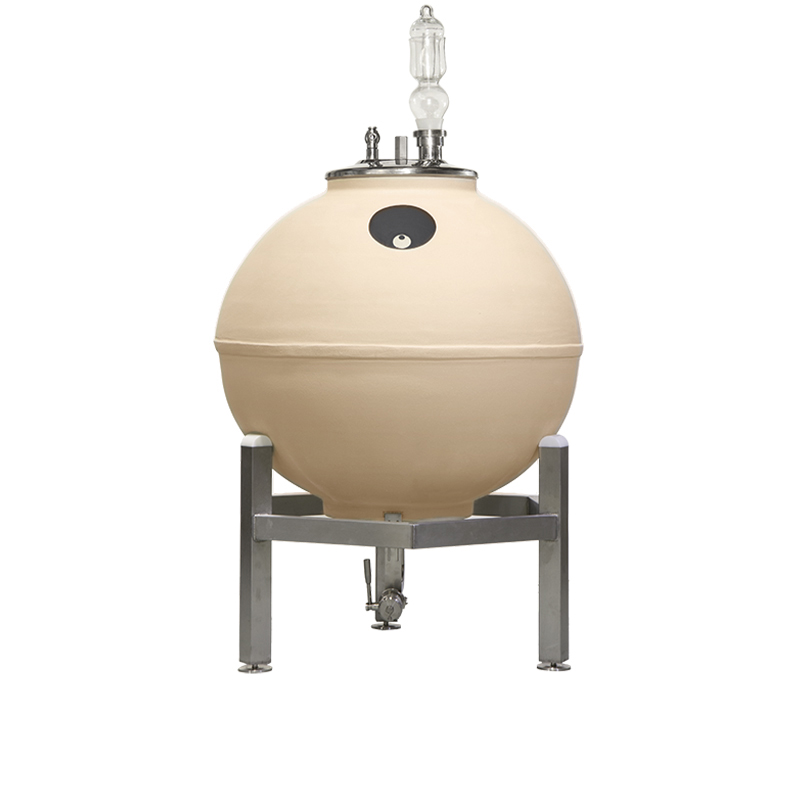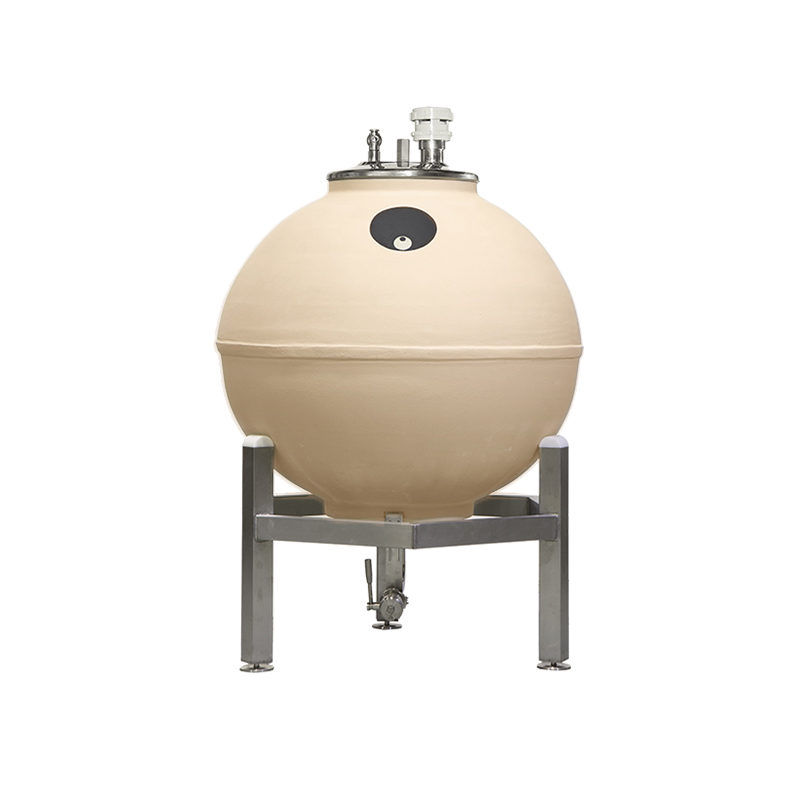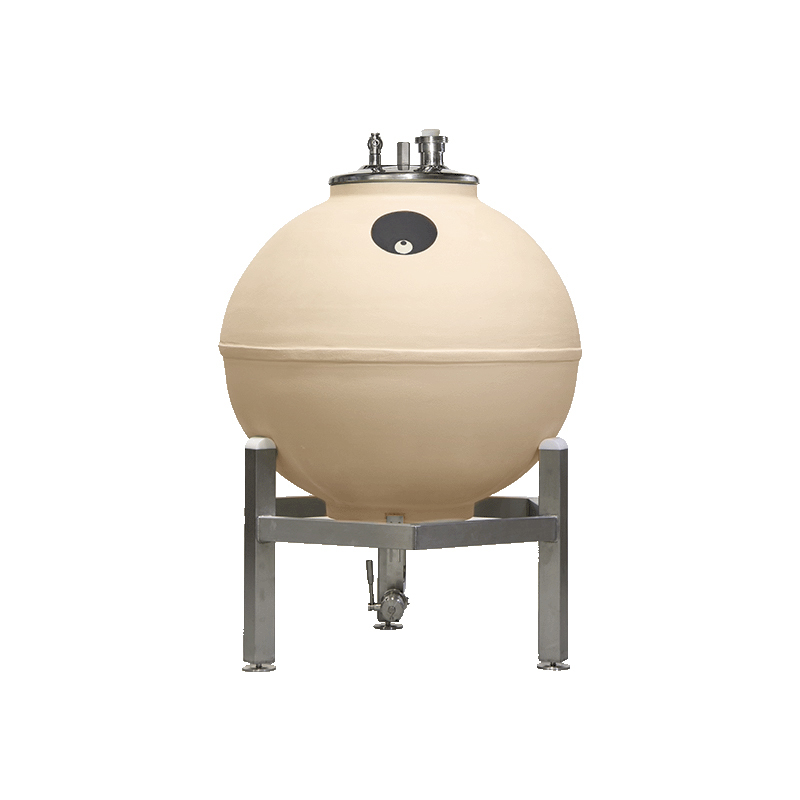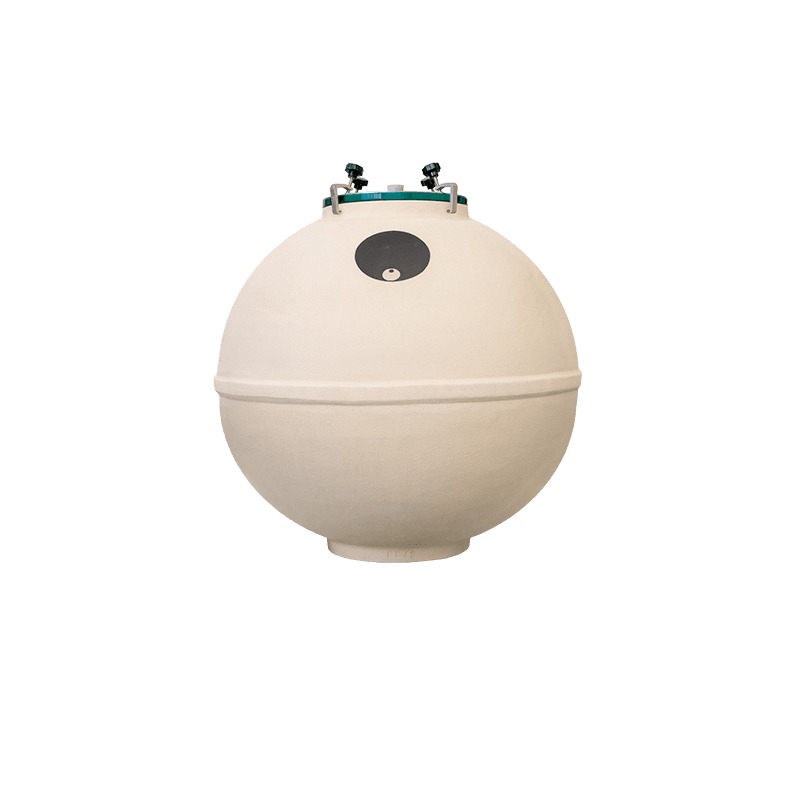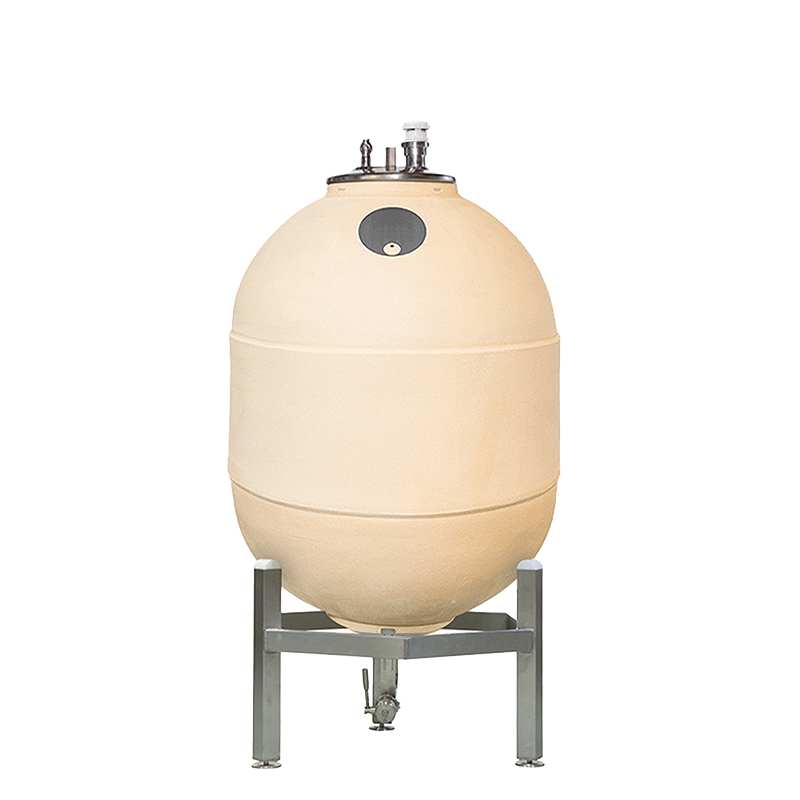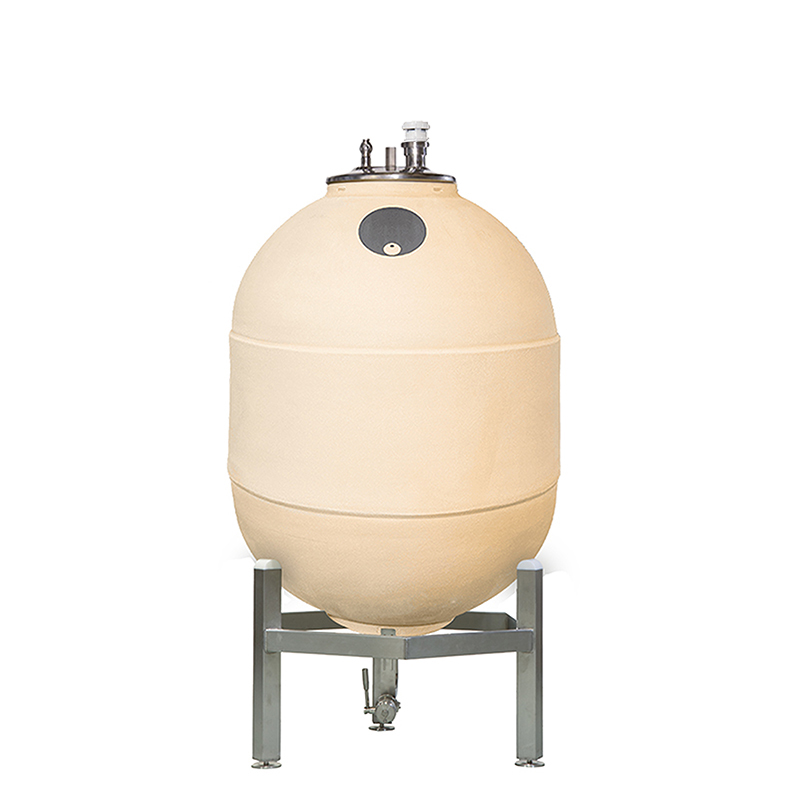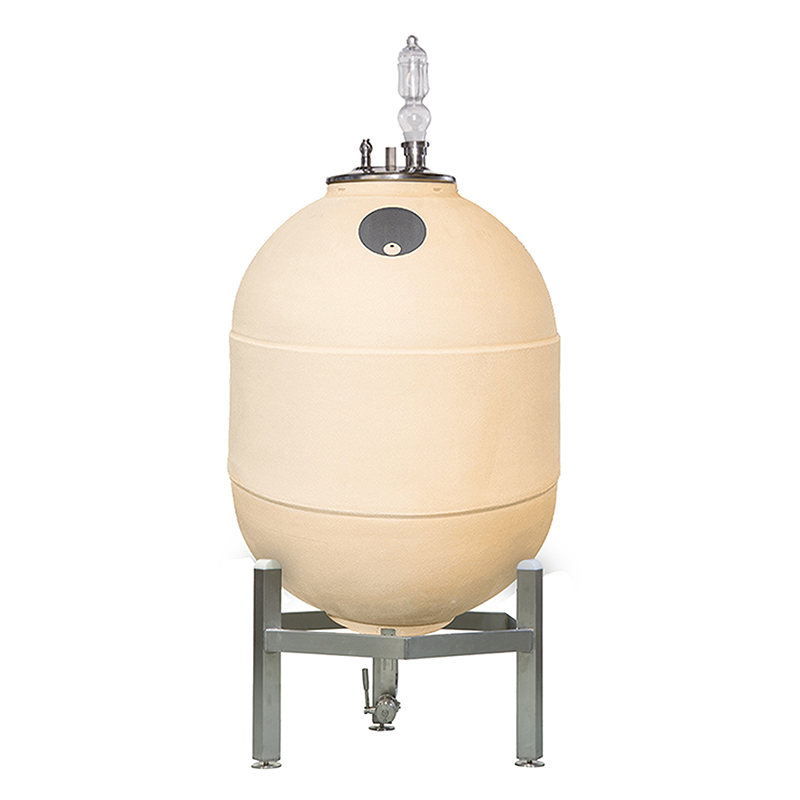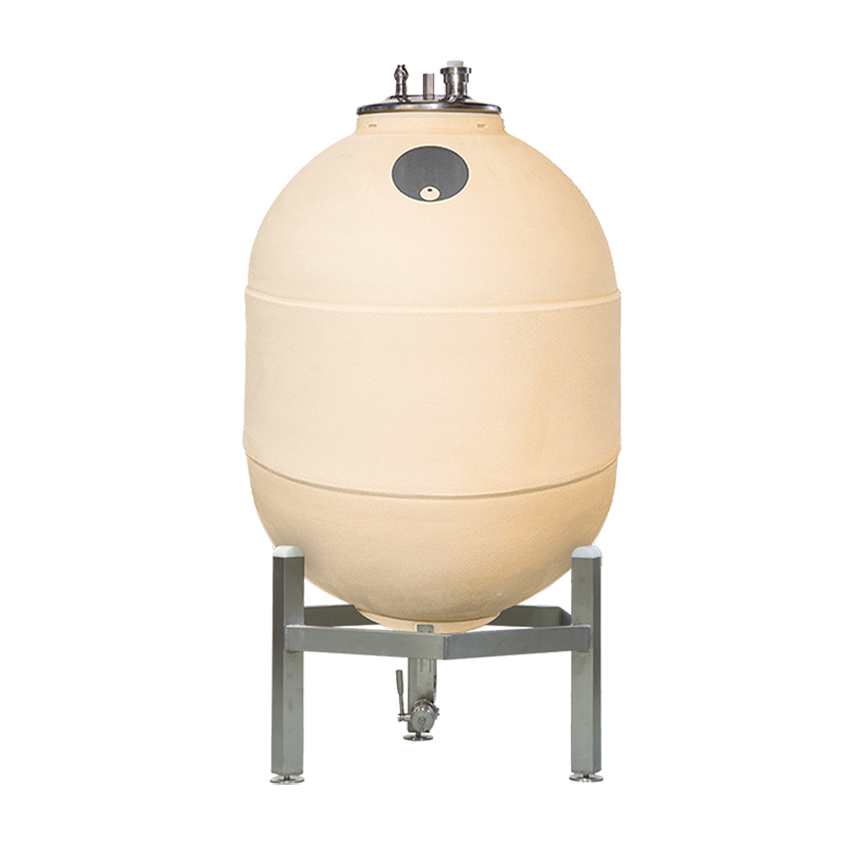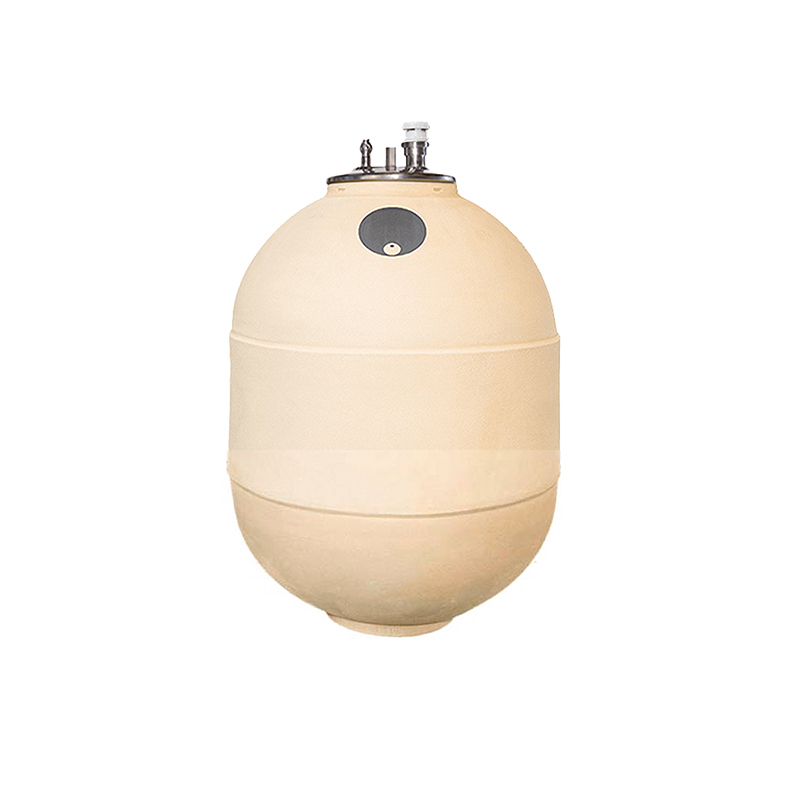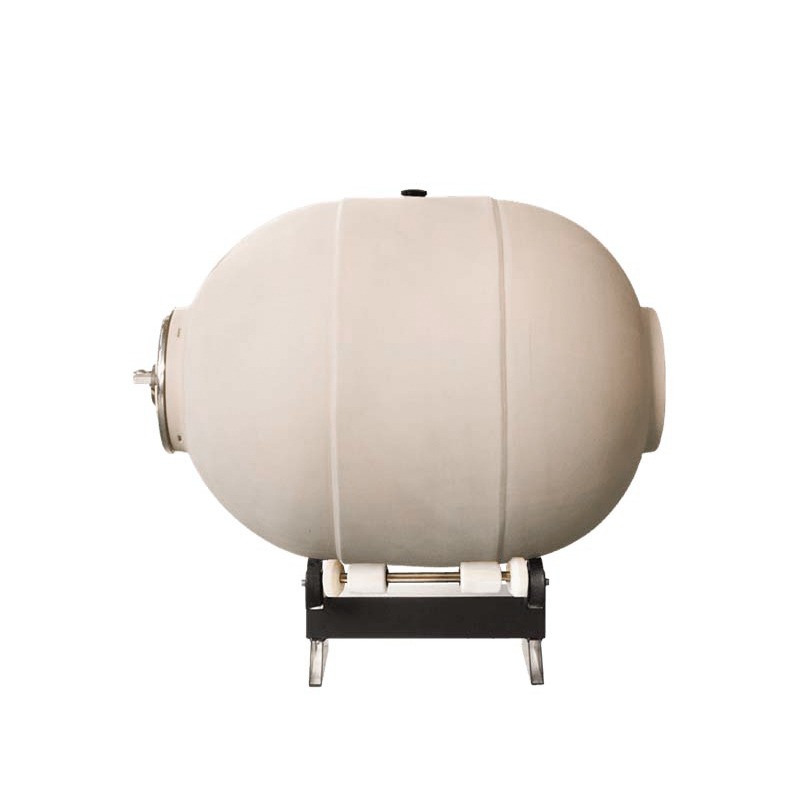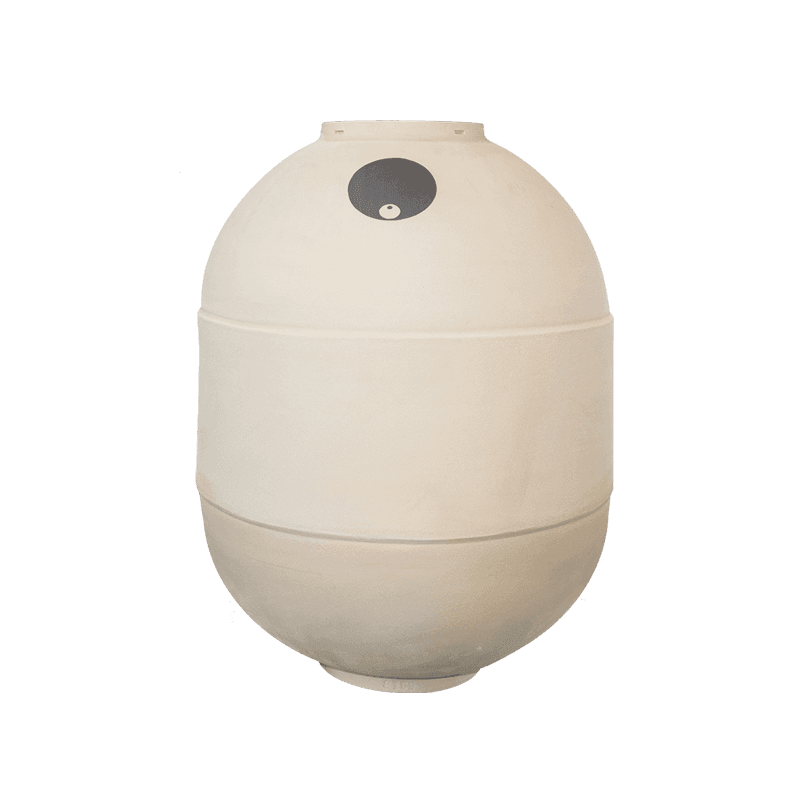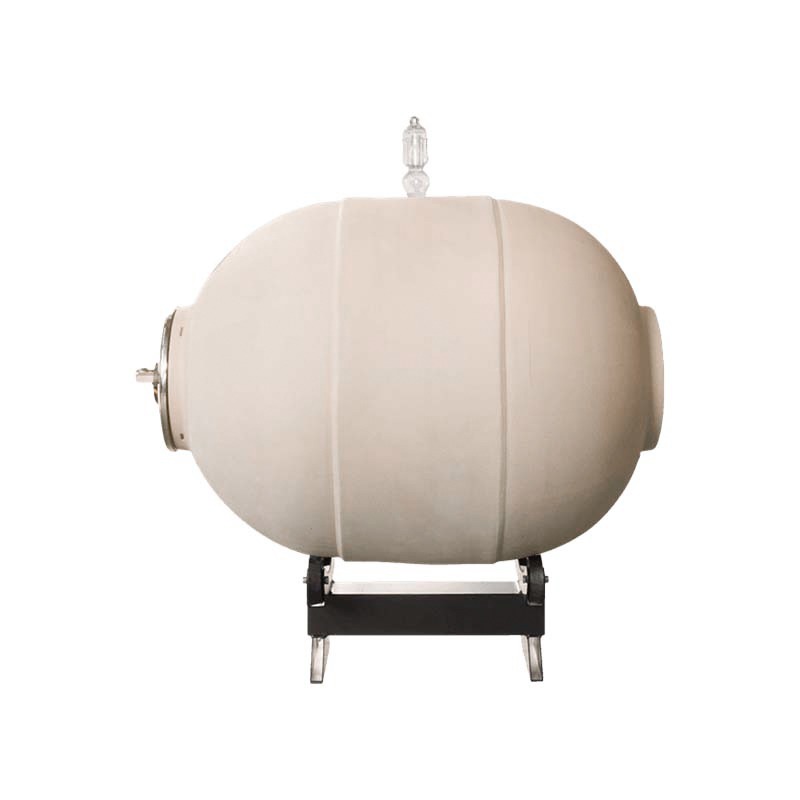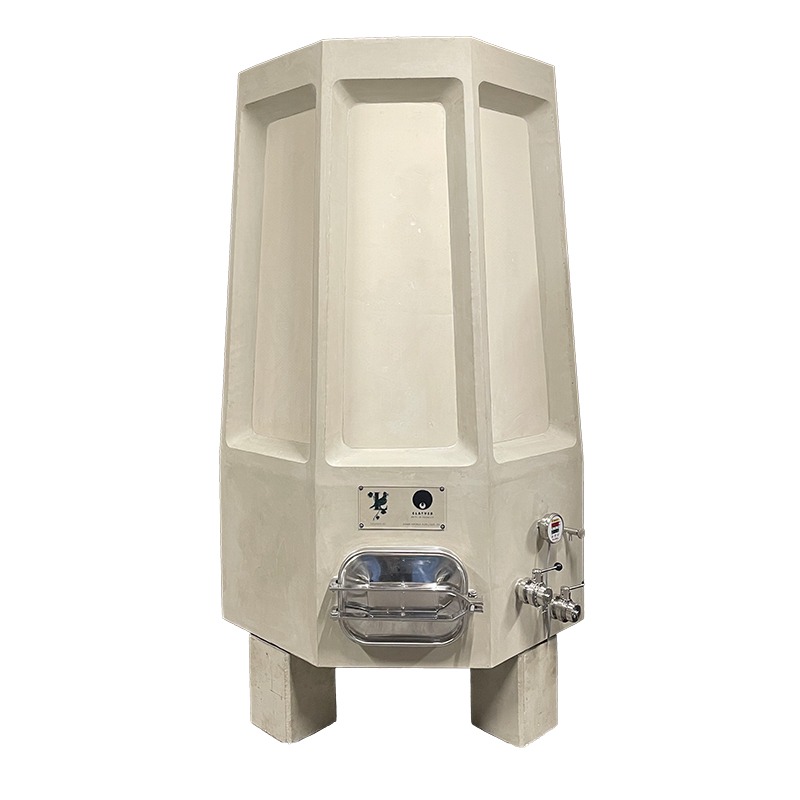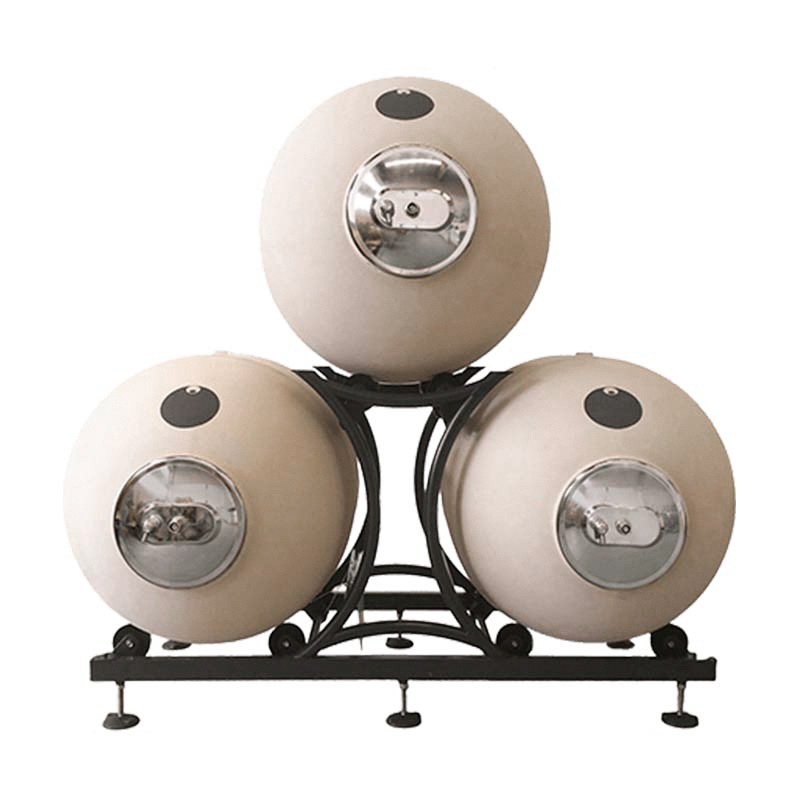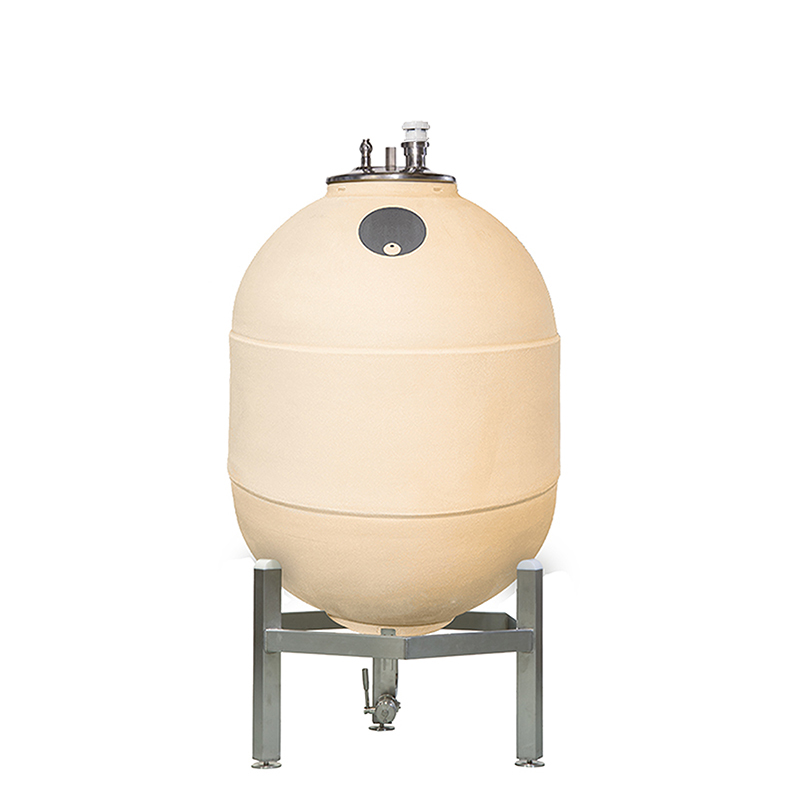FAQ Clayver: frequently asked questions
All the answers on our ceramic barrels for wine
What’s Clayver?
A definition
Clayver is a ceramic container with a capacity of 250, 400, 650, 1200, 2300 litres, with different storage solutions. The models available are Luna (250l), Galatea e Orizzonte (400l), Polifemo (650l), Trio (1200l), Oceano (2300l). The shape can be spherical or oblong to limit the weight and encourage the convective movements that occur naturally during fermentation and refinement on the fine lees. The spherical shape also makes the container easier to move around and facilitates cleaning.
What’s Clayver made of?
The material
Clayver is made of stoneware. This kind of ceramic is chemically more inert and
considerably harder than clayware. The most common contaminants coming from clayware
vessels are Iron and aluminium. The chemical composition of Clayver combined with the
considerably high firing temperature ensure a negligible migration to wine of any metal ion.
Clayver is porous. The little porosity is tuned to let a controlled amount of oxygen dissolve
into the wine, accompanying wine ageing. This must be considered especially when the vat
is cleaned and stored empty.
Clayver vats are resistant, but some precautions must be taken to avoid ruptures, chippings
and other damagements. Generally any direct contact (especially hits, strokes etc) with
metals (namely iron and steel) must be avoided. If it is necessary to lay on their side the
containers, make sure to place a soft interface (paperboard, wood etc) between Clayver and
the floor.
A particular attention must be paid to the top edges of the clayver. Sharp edges are delicate
and the top flattened surface must not be scratched to maintain a good sealing.
If a racking pipe is used, make sure that the steel pipe is protected from the direct contact to
the edges of the container by means of a silicon socket. The same is true for any kind of
stock or steel tool put inside the clayver for example to move up lees
Deep Cleansing
Natural cleansing
Keep in mind that the material is similar to a sponge that must be cleansed internally. That’s the reason why a product with a high penetration capacity is needed. Enzymes can be helpful for this task. We suggest a couple of products but many others are available.
Fill up the clayver with warm water (60°) and add the proper amount of products like REALCO ENZYWINE R10, or LAFFORT DECAPOL EXTRALIFE. Keep the clayver filled up for one day then spill out the solution into one other clayver. Fill up the first clayver with a solution of water and citric acid and let it inside for one other day. A final rinsing of water + metabisulfite could be also helpful.
Finally, keep in mind that the clayver is now like a sponge soaked with water. IT MUST BE
DRIED UP AND MAINTAINED DRY. It is sufficient to place one bulb lamp hanging from the
top hole (not in direct contact to the material) or use a professional hairdryer to heat and dry
the clayver from the inside. Possibly store it in a dry place or put a bulb lamp inside
WHENEVER the clayver is empty.
Normal Cleansing allowed products:
. NaOH solutions
. Peracetic acid
. Citric acid solutions
. Metabisulfite
. Hydropower (but don’t target directly the top edges of the Clayver)
. Steam.
In this case pay attention to avoid any direct contact between the steel pipes and
internal surfaces of Clayver or the glass lid. Do not tighten much the clamps system and
possibly place a cardboard interface under the steel ring.
Is Clayver “natural”?
The adjective “natural” is often abused. Clayver is a man-made product, but all the raw
materials in the mix have natural origin. They are selected for their purity and enological
suitability, mixed with water, moulded into a sphere shape and finally fired. Nothing else.
What differences are there with terracotta?
Un solo tipo di terra
Terracotta, unlike Clayver, is made of only one kind of material, usually extracted in the area of transformation without any selection and fired at temperatures below or just above 1000°C.
Moreover terracotta presents usually a high level of porosity, often excessive, and sometimes requires waterproofing in order to contain liquids.
What differences are there with concrete?
Resistance towards acids
Clayver can be compared to concrete for its impermeability and thermic insulation. However Clayver undergoes a high temperature treatment that makes it far more stable compared to concrete. Clayver therefore acquires an extremely high chemical resistance to acids and bases that concrete doesn’t have.
.
What differences are there with steel?
Insulation and porosity
There are three differences with a steel container:
. Clayver’s higher level of thermal insulation due to its weight and the width of the inside, that is over 2 cm;
. No electric conductivity and therefore fewer problems of wine reduction;
. Small residual porosity that allows a transfer of oxygen to wine, although modest.
What differences are there with wood?
Absence of susbstances given to wine
The main difference between Clayver and wood consists in the absence of substances released to wine. Clayver’s porosity is equivalent to that of wood but the oxygen transfer rate is generally lower, because of wood’s different organic matrix.
How do you move Clayver?
Attention and care
Clayver is made with ceramic and therefore can break if it is subject to quite violent impact against hard corners or if it falls from even modest heights. For this reason the movement of Clayver must be carried out always by rolling it over surfaces that aren’t hard or protected ones, for example with cardboard, or by hoisting it and inserting in its mouth a wooden board longer that its diameter and lifting it from the center with a rope.
Clayver usually comes with a stainless steel stand with polyethylene supports. It can be moved with a normal pallet truck. When you lift up the container we recommend laying it to the ground as gently as possible. Only the 250 liter Clayver can be rotated on itself (when empty) and turned upside down and only on the steel support, in order to clean it for example with a barrel washer or for storing when empty.
What food guarantees are there?
A guaranteed certification
Ceramics have a regulation for its use in use with food and must comply with precise limits with reference to the emission of cadmium and lead in an acidic environment. Clayver does not contain these substances. Clayver has passed all the release tests in acid solution with pH below 2.5 even as far as all the other elements in its natural composition are concerned.
Clayver always issues on request certification according to Regulation 1935/2004/CE, 2005/31/CE Directive and Ministerial Decree 04/04/1985.
How much is Clayver?
The capacity of a barrique
Clayver currently has the capacity of a barrique, a container that we have considered as a staple. Its price is the same as a fine barrique, with the difference that, treated adequately, Clayver will last forever and will never yield any substance to wine, nor will alter its organoleptic characteristics.



